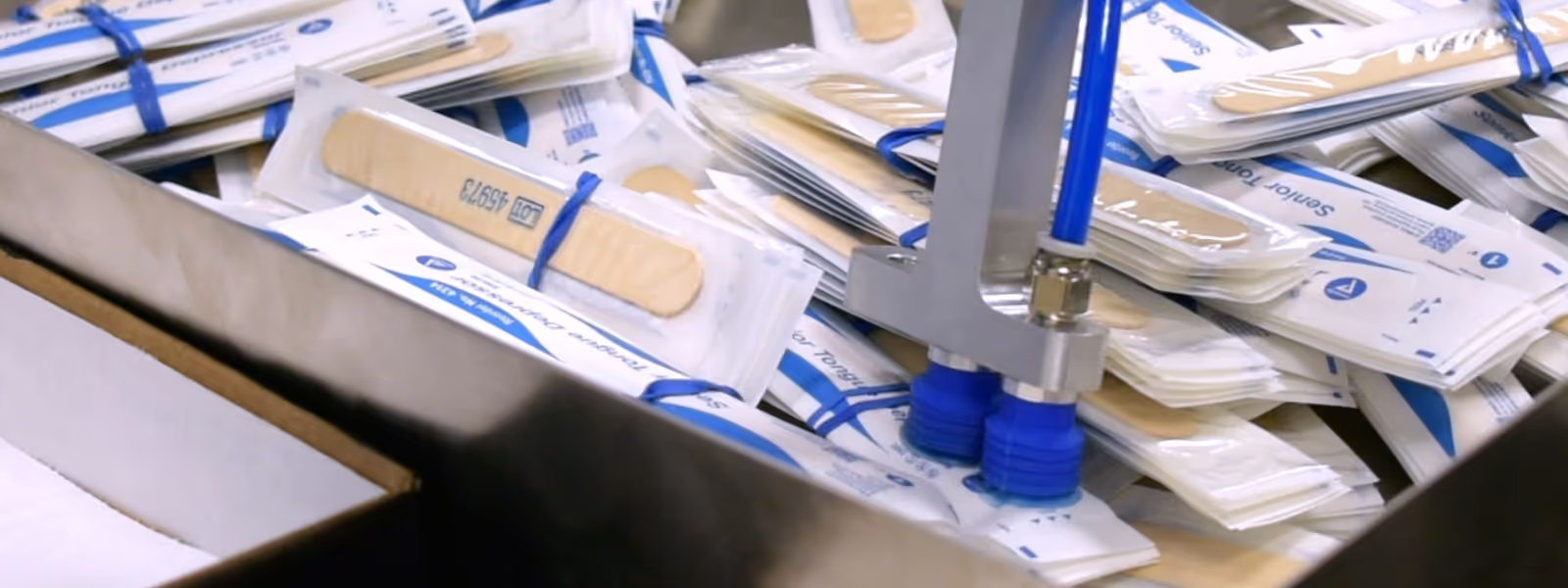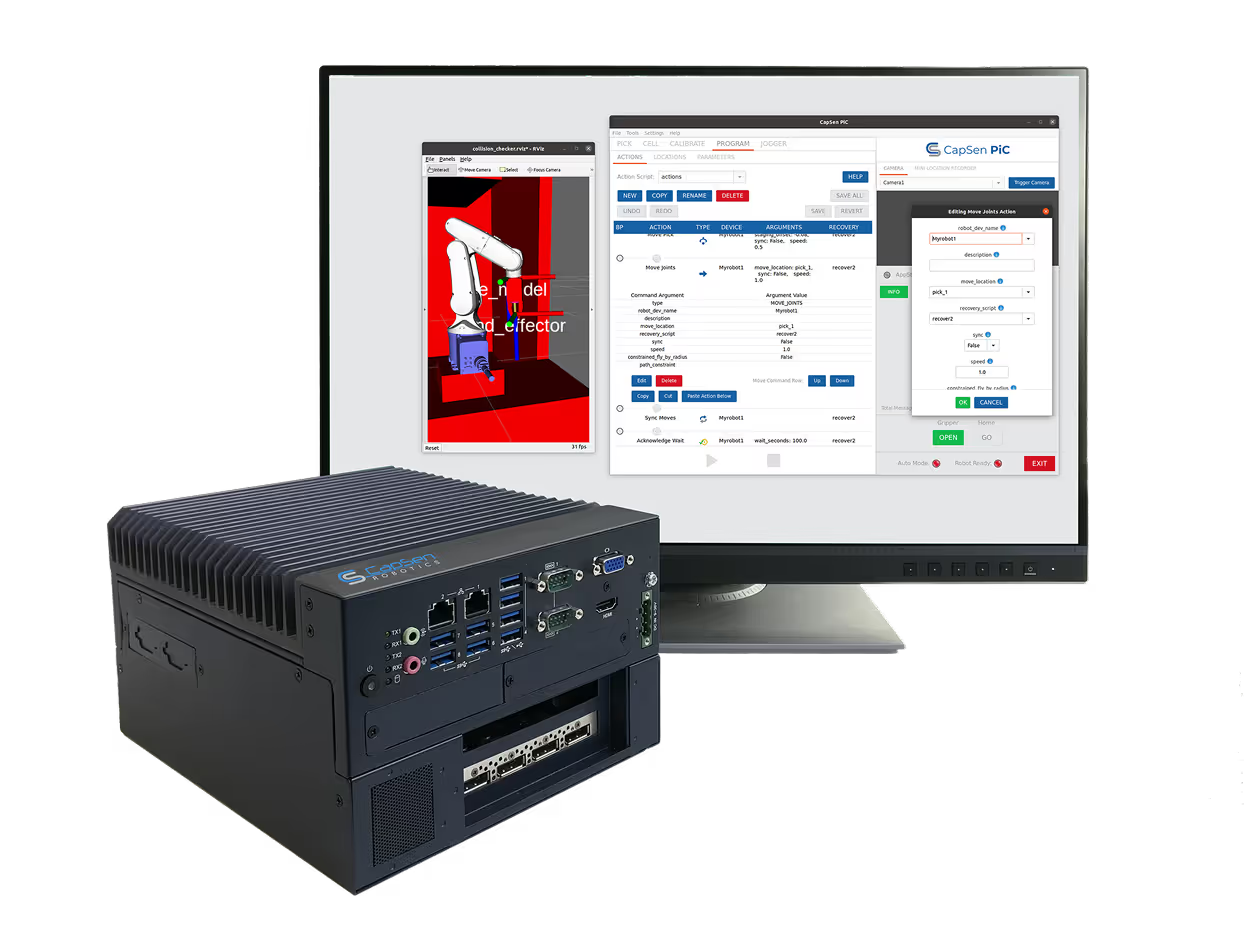

Equipping a robot with 3D vision technologies, end of arm manipulation, and motion planning software offers tremendous benefits for medical device and pharmaceutical companies, as these systems provide the ability to automate and streamline disparate processes. These include medical kitting, medical device assembly, and medical supply sorting. CapSen Robotics CapSen PiC software delivers consistent and full control of the entire robot work cell – from 3D camera to end effector – for accurate, high speed bin picking.
While “blind” robots can help companies in industries of all types automate certain tasks, pairing an industrial robot with 3D vision technologies opens the door to myriad new robotic capabilities while increasing flexibility, enhancing efficiency, and reducing costs. In the medical and pharmaceutical space, vision-guided robots have become an indispensable technology to businesses around the globe — especially after the COVID-19 outbreak.
Deploying a robotic picking system, for example, allows medical device and pharmaceutical companies to ensure accurate, efficient picking that can run 24/7. Bin-picking or pick-and-place systems typically consist of a 3D machine vision system, a robotic manipulator, and software. These systems pick up objects from containers such as bins and totes and place them onto another area or process, such as a conveyor, pallet, or shelf. The systems streamline production processes and remove workers from dull, dirty, or dangerous jobs.
Examples of robotic applications in the medical and pharmaceutical spaces include:
Automating the process of handling different types of medical supplies can save hospitals and medical centers time while allowing employees to add value in more meaningful ways. CapSen Robotics recently developed a bin-picking system capable of handling and sorting more than 100 different sutures that might go unused during surgery. Previously, hospital technicians had to manually identify each suture by type and place it into a corresponding bin. The robotic work cell automates the process of sorting the items from a cluttered container, saving time and effort.
Medical product or instrument kitting involves assembling different parts into kits for hospitals, surgery centers, medical offices, health care agencies, or at-home use. Examples include first aid kits, test kits, and surgery kits. Manual kitting takes up more space, is more prone to error, and requires more time, while automated pick-and-place systems deliver a simplified, faster, and more accurate kitting solution while reducing floor space. During the height of the COVID-19 pandemic, CapSen Robotics designed and built a high-speed, accurate bin-picking solution with an integrator partner for the robotic kitting of COVID-19 tests.
Like so many other manufacturing processes, medical device assembly benefits significantly from the use of robotic pick-and-place systems. For example, machine vision cameras can inspect subassemblies for medical devices in a tray. A 3D-vision-guided robot can pick a subassembly from the tray and place it into secondary packaging, the next part of the process, or elsewhere. Doing so saves medical device manufacturers time and money while speeding up assembly and manufacturing process to keep pace with demands and to drive revenue.

While bin-picking systems can deliver significant operational improvements, challenges exist when it comes to deploying these technologies. Loose parts might be randomly piled in containers, making it difficult for a system to differentiate and pick up items. Achieving success is contingent upon segmenting and identifying individual objects and finding them among clutter. Years of advancements in 3D imaging have made this task easier. While several options exist on the market today, CapSen PiC software delivers consistent and complete control of the robot, end effector, and 3D cameras within the robot cell, greatly reducing the integration burden of deploying a bin-picking system.
Compared to similar options on the market, CapSen PiC solutions achieved the best performance in several categories, including speed, variety of objects identified, vision and detection, application types, and motion planning capabilities. Our hardware-agnostic software features motion planning algorithms that ensure collision avoidance and can even perform advanced motion planning tasks, such as detangling and assembly. In addition, image processing and planning times of less than a second make it the fastest software on the market, allowing PiC-powered cells to pick and place up to 30 parts per minute.
CapSen Robotics also provides testing and results-based consulting, custom end effector design, task configuration, custom picking algorithms, and installation support. Contact CapSen Robotics today for a pick test and let us solve your pick-and-place challenges. Learn more about CapSen PiC here.

The CapSen PiC Computer and User Interface